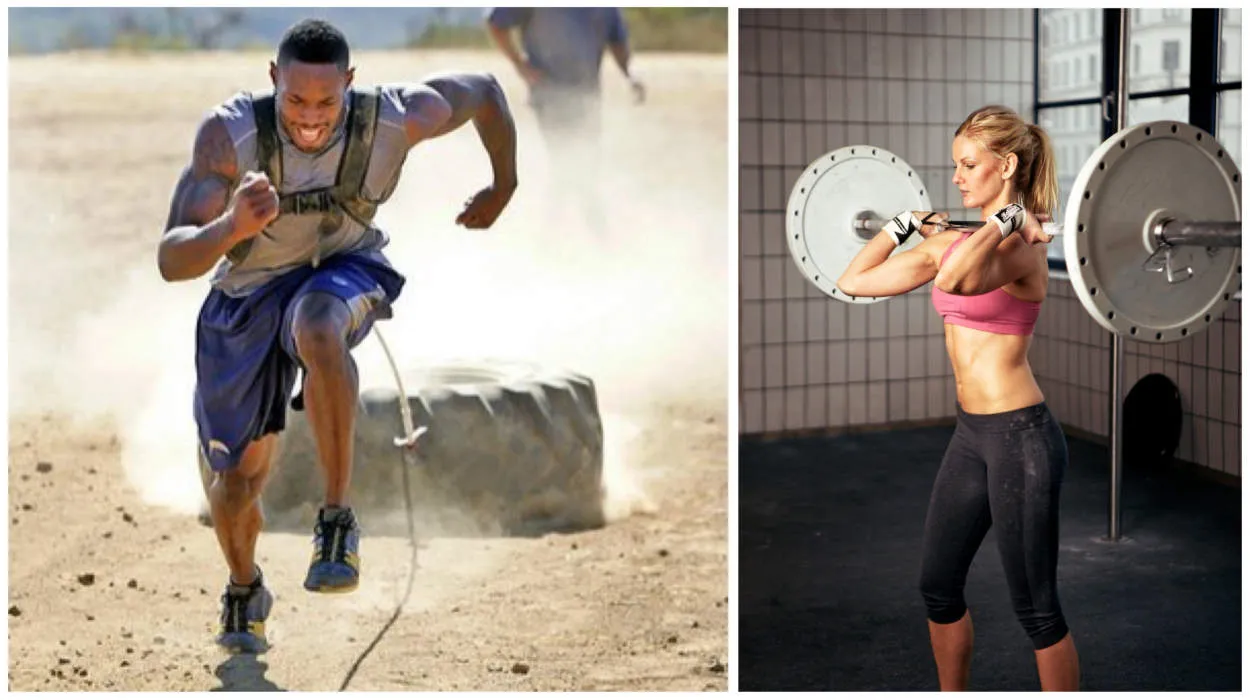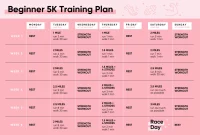Elite Training Techniques for Aspiring Athletes
Adopting Pro Training Methods
Aspiring athletes are constantly seeking new ways to enhance their performance and improve their skills. With the ever-evolving world of sports, it is crucial for athletes to stay updated on the latest training techniques employed by elite athletes. By adopting professional training methods, aspiring athletes can take their performance to new heights.
Variety in Training
One key aspect of pro training methods is the incorporation of a diverse range of exercises and training routines. This helps athletes develop different muscle groups, prevent monotony, and avoid injury. Elite athletes often engage in strength training, agility drills, endurance training, and skill-specific exercises to improve overall athletic performance.
Focus on Proper Technique
Professional athletes place a strong emphasis on mastering proper technique in their respective sports. They understand that executing movements correctly not only maximizes performance but also reduces the risk of injury. Aspiring athletes can benefit from working closely with coaches and trainers to refine their techniques and make necessary adjustments to their form.
Sports-Specific Training
Elite training techniques prioritize sports-specific exercises tailored to the demands of a particular game or event. By simulating the movements, intensity, and conditions associated with their sport, athletes can better prepare themselves mentally and physically. Specific drills and training regimens can enhance stamina, speed, agility, and decision-making abilities required in competitive sports.
Mental Conditioning
An often overlooked aspect of elite training methods is the focus on mental conditioning. Many athletes attribute their success to mental toughness and resilience. Through techniques such as visualization, goal setting, and mindfulness, aspiring athletes can develop mental fortitude to overcome challenges, stay focused, and perform at their best under pressure.
Recovery and Rest
Professional athletes understand the importance of recovery and rest in their training routines. Adequate sleep, proper nutrition, and strategic rest days are crucial for optimal performance. Aspiring athletes should prioritize recovery, allowing the body to repair and rebuild, preventing burnout and reducing the risk of injuries.
In conclusion, adopting pro training methods is essential for aspiring athletes looking to achieve their full potential. By incorporating a variety of exercises, focusing on proper technique, engaging in sports-specific training, nurturing mental conditioning, and prioritizing recovery, athletes can elevate their performance and take steps towards becoming elite athletes.
Balancing Strength
Elite Training Techniques for Aspiring Athletes
Achieving peak performance as an athlete requires more than just raw strength and power. It demands a balance between strength training and other crucial aspects of athletic development. While developing physical strength is important, neglecting other areas can lead to imbalances and hinder overall performance.
Functional Training
Elite athletes understand the importance of functional training, which focuses on movements that mimic the demands of their sport. This type of training not only helps to build strength, but also enhances agility, coordination, and flexibility. Integrating exercises that simulate real-life scenarios helps athletes improve their performance in specific sports movements.
Core Stability
The core plays a significant role in athletic performance. Building a strong and stable core is essential to provide a solid foundation for powerful movements and to prevent injuries. Athletes should incorporate exercises such as planks, Swiss ball exercises, and rotational movements to strengthen their core muscles.
Flexibility and Mobility
Flexibility and mobility are key factors in preventing injuries and enhancing athletic performance. Regular stretching exercises and mobility drills should be included in an aspiring athlete’s training routine. These practices help improve range of motion, reduce muscle imbalances, and enhance overall movement efficiency.
Rest and Recovery
Elite athletes understand that rest and recovery are just as important as the training itself. Overtraining can lead to fatigue, decreased performance, and increased risk of injuries. Incorporating adequate rest days, quality sleep, and recovery strategies like foam rolling and massage can ensure that the body has enough time to recover and adapt to the training stimulus.
Individualization
Each athlete is unique, and training programs should be tailored to individual needs and goals. Working with a qualified coach or trainer can help aspiring athletes develop a personalized training plan that addresses their weaknesses and optimizes their strengths.
Conclusion
In the world of elite athletes, strength alone is not enough. Balancing strength training with functional training, core stability, flexibility and mobility work, rest and recovery, and individualization is crucial for success. Aspiring athletes can take their performance to the next level by implementing these techniques into their training regimen.
Speed
Speed is a crucial aspect of any athlete’s performance, especially for those aspiring to be at the elite level. To enhance speed, athletes need to adopt specific training techniques that focus on various components of speed development, such as acceleration, top speed, and agility.
One effective technique is interval training, which involves alternating high-intensity sprints with periods of rest or slower-paced activities. This method helps improve both anaerobic and aerobic capacities, enabling athletes to maintain their speed for longer durations.
Another valuable training technique is plyometrics, which involves explosive movements that boost power and speed. Exercises like box jumps, hurdle hops, and bounding help athletes develop stronger and more reactive muscles, ultimately leading to faster sprinting and better overall speed performance.
In addition to specific training exercises, proper form and technique are paramount when it comes to speed improvement. Athletes should focus on maintaining a strong posture, driving their knees upward during sprints, and generating power through their arms. Correct running mechanics ensure optimal speed and minimize wasted energy.
It is also essential to incorporate strength training into the overall training program. Strengthening the muscles responsible for speed, such as the glutes, hamstrings, and core, improves stability, power, and overall running economy.
Finally, recovery plays a vital role in speed development. Adequate rest, sleep, and nutrition are crucial to allow the body to repair and rebuild after intense training sessions. This ensures that athletes can consistently perform at their maximum speed without risking injuries or burnout.
By implementing these elite training techniques for speed development, aspiring athletes can significantly enhance their overall performance and achieve their goals in their respective sports.
Heading: Training for Strength and Endurance
Elite Training Techniques for Aspiring Athletes
Achieving peak performance as an athlete requires both strength and endurance. While there are various training techniques available, elite athletes follow specific strategies to maximize their physical abilities. Let’s explore some of the most effective training methods utilized by aspiring athletes:
1. High-Intensity Interval Training (HIIT)
HIIT involves alternating intense bursts of exercise with short recovery periods. These sessions are designed to push individuals to their limits, improving both cardiovascular endurance and overall strength. Incorporating activities like sprints, plyometrics, and kettlebell workouts, HIIT helps athletes build stamina and power.
2. Plyometric Exercises
Plyometric exercises focus on increasing explosive power through rapid muscle contractions. These movements, such as box jumps, squat jumps, and medicine ball throws, not only improve strength but also enhance an athlete’s reaction time and agility.
3. Strength Training
Building muscular strength is a fundamental aspect of an athlete’s training regimen. Strength training involves lifting weights or utilizing resistance equipment to target specific muscle groups. By enhancing muscle mass and developing stronger muscles, athletes can improve their overall performance and reduce the risk of injury.
4. Endurance Training
Endurance training focuses on improving an athlete’s ability to sustain prolonged physical activity. Long-distance running, cycling, and swimming are common forms of endurance exercises. Incorporating these activities into their routine helps athletes to boost their cardiovascular fitness and develop the stamina required for endurance-based sports.
5. Cross-Training
Engaging in a variety of different training activities is known as cross-training. This technique helps athletes to work out different muscle groups while also preventing overuse injuries. By incorporating activities like yoga, swimming, or cycling alongside their main sport, athletes can improve their overall fitness and prevent burnout.
By adopting these elite training techniques, aspiring athletes can unlock their full potential and enhance their athletic performance. Remember, consistency and proper technique are key to achieving long-term progress. As you embark on your training journey, consult with a professional coach or trainer to develop a program that addresses your specific needs and goals.
The Importance of Mental Toughness
Mental toughness is a crucial factor for aspiring athletes looking to reach the elite level. It refers to the psychological resilience and ability to perform under pressure, setbacks, and challenges. While physical training and technique are important, mental toughness often determines the difference between success and failure in sports.
1. Enhanced Performance
Athletes with high levels of mental toughness are better able to stay focused and perform at their best, even in high-pressure situations. They have the ability to block out distractions and maintain concentration on the task at hand. This allows them to consistently perform at a high level and deliver results when it matters most.
2. Resilience and Overcoming Obstacles
Mental toughness provides athletes with the resilience to bounce back from setbacks and overcome obstacles. When faced with challenges such as injuries, defeats, or difficult training regimes, mentally tough individuals are better equipped to stay motivated, maintain a positive mindset, and continue working towards their goals.
3. Improved Focus and Concentration
Elite athletes must be able to maintain focus and concentration for extended periods. Mental toughness allows athletes to stay fully engaged in their training and competitions, minimizing the potential for mistakes that can result from loss of focus. With heightened focus, aspiring athletes can seize every opportunity and maximize their performance.
4. Coping with Pressure
Sports often involve high-pressure situations, such as crucial matches or important competitions. Athletes with mental toughness can handle these pressure situations more effectively. They are less likely to succumb to stress, anxiety, or performance-related nerves, enabling them to perform to the best of their abilities when the stakes are high.
5. Positive Mindset and Motivation
Mental toughness nurtures a positive mindset that helps athletes stay motivated and focused on their goals. It allows them to see setbacks or failures as opportunities for growth and learning, rather than fixed barriers. With a strong mental approach, athletes are more likely to persist through adversity and maintain the drive to improve.
Mental toughness is a skill that can be cultivated through various techniques, including visualization, positive self-talk, goal setting, and mindfulness. Building mental resilience alongside physical training is essential for athletes aspiring to reach their full potential and achieve success at the elite level.
Utilizing Video Analysis in Training
Video analysis has become an essential tool in elite training techniques for aspiring athletes. Through the use of video technology, coaches and trainers are able to pinpoint areas of improvement, track progress, and enhance performance in various sports disciplines. Utilizing video analysis provides athletes with invaluable insights and a competitive edge.
Enhancing Technique
By reviewing recorded footage of training sessions or competition performances, athletes can analyze their technique with greater detail. They can identify flaws in their form, spot areas of improvement, and make appropriate adjustments. Video analysis enables athletes to fine-tune their movements, leading to improved performance and reduced risk of injury.
Identifying Weaknesses
Video analysis allows athletes and coaches to identify weaknesses that may not be easily noticeable during live training sessions. Slow-motion playback and frame-by-frame analysis help detect weaknesses in speed, agility, accuracy, and other crucial aspects of performance. This knowledge enables trainers to design targeted exercises and drills to address those weaknesses effectively.
Tracking Progress
Recording training sessions and regularly reviewing previous recordings allows athletes to track their progress over time. By comparing past performances to current ones, athletes can gain insight into their development and celebrate achievements. This visual feedback helps maintain motivation and encourages athletes to strive for continuous improvement.
Strategy and Game Analysis
Video analysis is not limited to individual training sessions. It also plays a crucial role in team sports, where coaches and athletes can study game footage to analyze opponents’ tactics and develop counter-strategies. By studying the strengths and weaknesses of rival teams, athletes can adjust their game plans and gain a competitive advantage.
In conclusion, video analysis is an invaluable tool in elite training techniques for aspiring athletes. It enhances technique, identifies weaknesses, tracks progress, and aids in strategy development. By utilizing video analysis, athletes can maximize their potential and elevate their performance to elite levels.
The Evolution of Training Regimens in Sports
In the world of sports, elite training techniques have evolved significantly over the years. Aspiring athletes today benefit from an intricate blend of science, technology, and innovation to enhance their performance and reach peak physical condition. This article explores the notable advancements in training regimens that have shaped the landscape of competitive sports.
One of the key developments in training regimens is the use of data-driven analysis. Athletes now have access to sophisticated tools and technologies that provide detailed insights into their performance. This data enables trainers and coaches to identify strengths and weaknesses, allowing for targeted training programs. By leveraging this information, athletes can fine-tune their skills and optimize their training for improved results.
Furthermore, the integration of specialized equipment has revolutionized training methods. High-performance gear and devices, such as wearable technology and virtual reality simulations, have become integral components of modern training regimens. These tools offer realistic and immersive experiences that replicate game conditions, allowing athletes to train in a more controlled and focused environment.
Another significant breakthrough is the emphasis on injury prevention and rehabilitation. In the past, athletes often pushed their bodies to the limit, leading to frequent injuries and extended recovery periods. However, contemporary training regimens prioritize injury prevention through targeted exercises, proper nutrition, and adequate recovery time. Additionally, rehabilitation programs have become more structured and tailored to individuals, helping athletes bounce back from injuries faster and stronger.
Moreover, contemporary training regimens prioritize mental conditioning alongside physical training. Sports psychology techniques, meditation, and mindfulness exercises have gained prominence as athletes recognize the importance of a strong mental state in achieving peak performance. By training the mind to remain focused, resilient, and confident, athletes can overcome obstacles and perform at their best, even under immense pressure.
The evolution of training regimens in sports is an ongoing process that continues to push the boundaries of human performance. As aspiring athletes strive to reach new heights, they tap into the latest advancements in training techniques, merging science and innovation for optimal results. With access to cutting-edge technology and a holistic approach to training, the potential for athletes to achieve greatness has never been greater.
Conclusion
Elite training techniques are essential for aspiring athletes to reach their full potential. From specialized strength and conditioning programs to cutting-edge sports science research, these methods push athletes beyond their limits, enhancing their performance and reducing the risk of injuries. By incorporating these techniques into their training regimen, aspiring athletes increase their chances of success in their respective sports.




